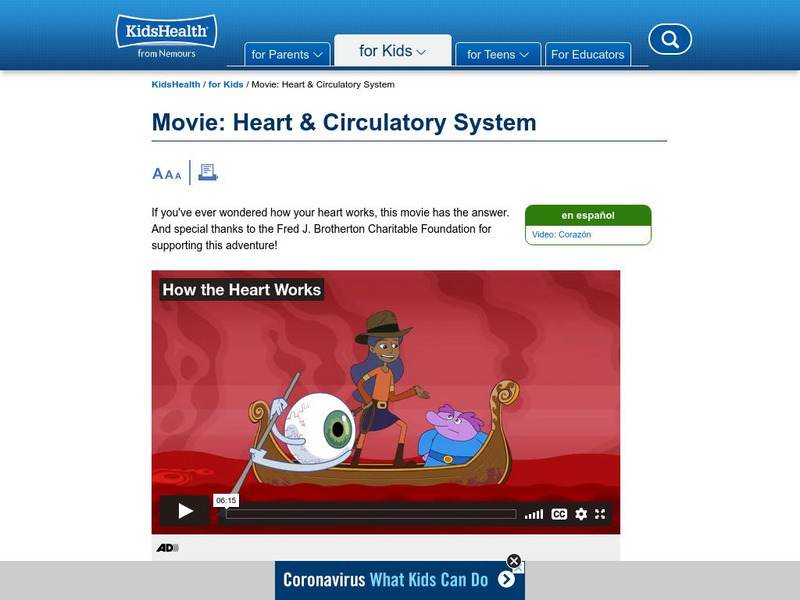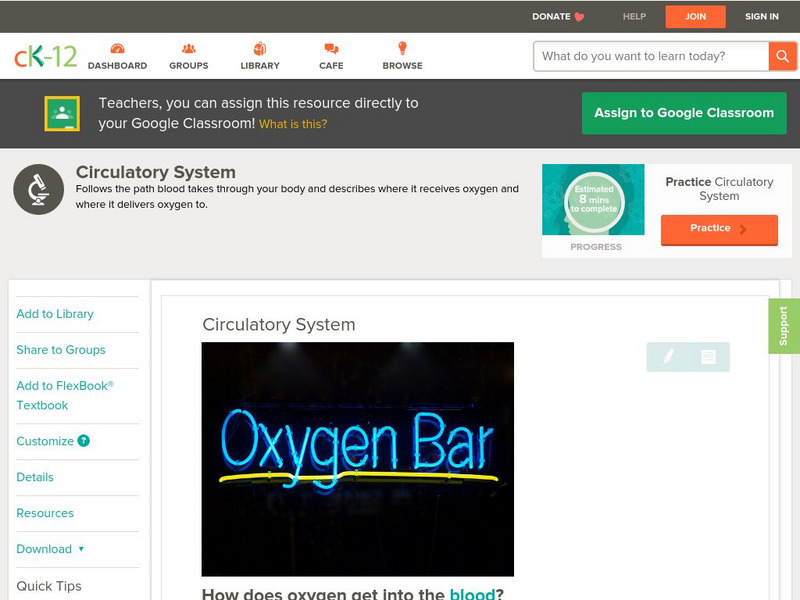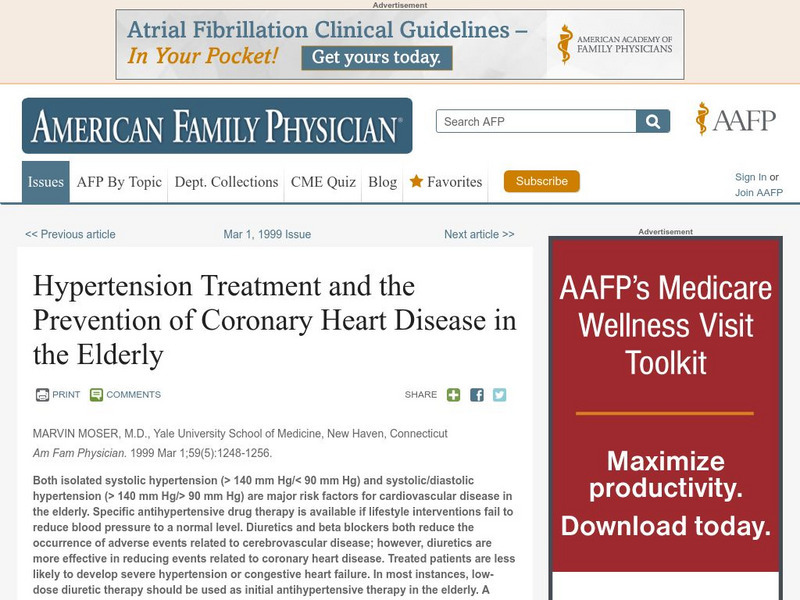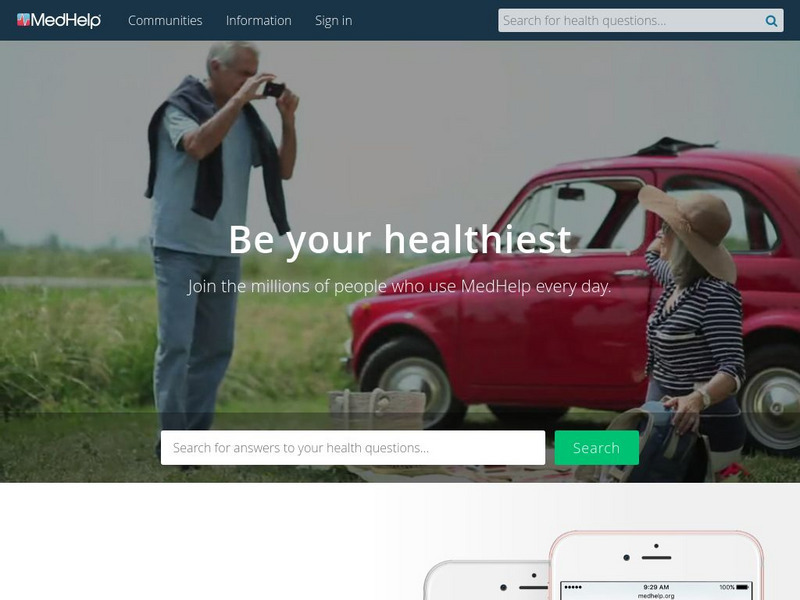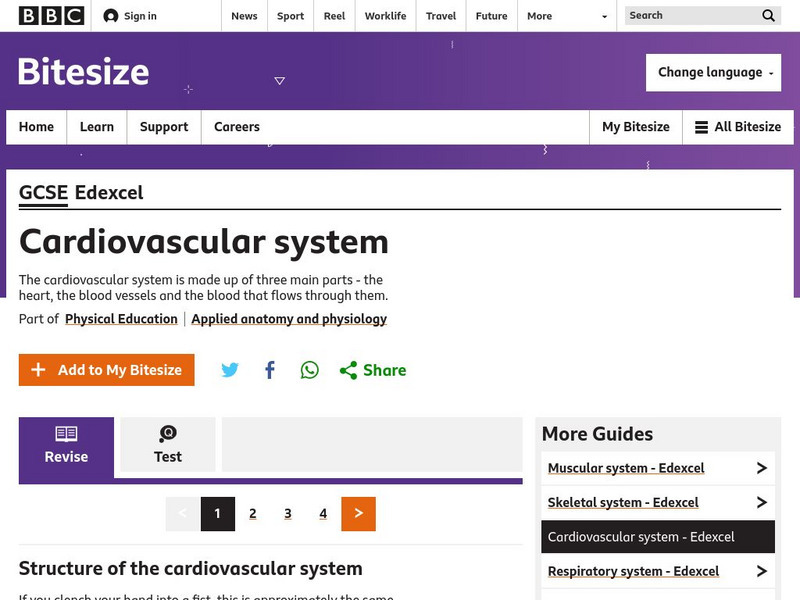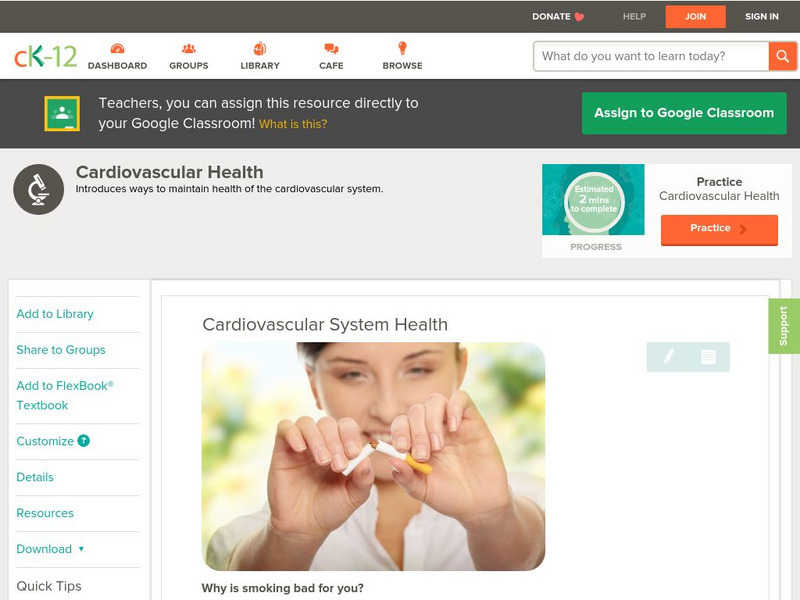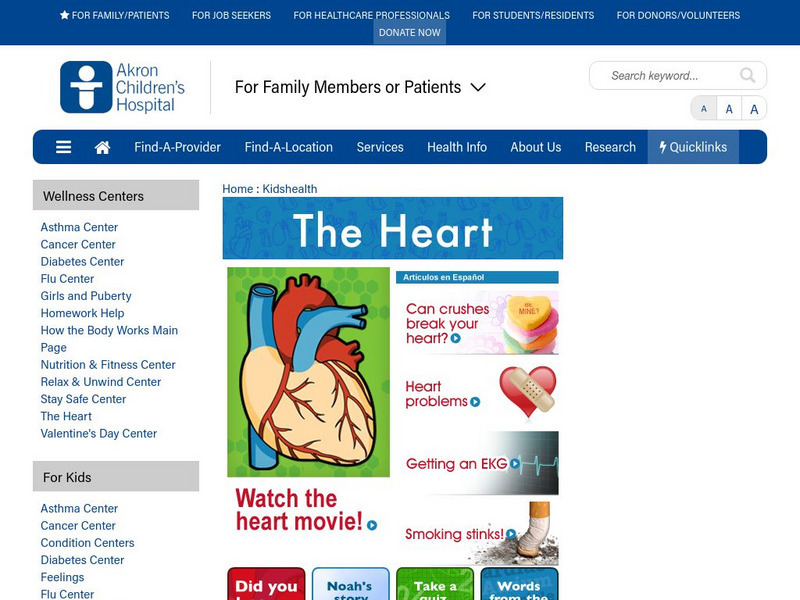TeachEngineering
Teach Engineering: Do You Have the Strength?
In this activity, students squeeze a tennis ball to demonstrate the strength of the human heart. Working in teams, they think of ways to keep the heart beating if the natural mechanism were to fail. The goal of this activity is to get...
TeachEngineering
Teach Engineering: The Heart of the Matter
This lesson describes how the circulatory system works, including the heart, blood vessels and blood. Students learn about the chambers and valves of the heart, the difference between veins and arteries, and the different components of...
Curated OER
Kids Health: Heart and Circulatory System Quiz
Take a quiz on the heart and circulatory system.
Curated OER
Kids Health: Heart and Circulatory System
With this resource, visitors can learn how the heart works and about the parts of the heart, the circulation of blood and heart health. The resource is also available in Spanish. Includes audio.
Curated OER
Kids Health: Heart
If you've ever wondered how your heart works, this movie and activity guide has the answer. [6:15]
American Academy of Family Physicians
Family doctor.org: Peripheral Arterial Disease and Claudication
This article provides information about peripheral arterial disease and claudication (poor circulation) and related health problems it.
CK-12 Foundation
Ck 12: Biology: Circulatory System
[Free Registration/Login may be required to access all resource tools.] Covers the pathways of the pulmonary and systemic circulations.
American Academy of Family Physicians
Aafp: Hypertension Treatment and the Prevention of Heart Disease in the Elderly
This article from the American Family Physician journal discusses medical research on the treatment of hypertension and its role in preventing coronary heart disease. Read about how doctors are treating and preventing hypertension and...
WebMD
Web Md: Congenital Heart Disease
WebMD offers information on congenital heart disease, including types, symptoms, diagnosis, and treatment.
Other
Med Help: The World's Largest Health Community
Med Help is designed to help "patients find the highest quality medical information in the world today." It includes an eNewsletter, news from The Cleveland Clinic Heart Center and ABC TV, and a list of articles which can be searched by...
BBC
Bbc: Gcse Bitesize: Cardiovascular System
A great overview of the Cardiovascular System, its structure and functions. See diagrams of the heart, and learn how the blood flows through the heart.
Read Works
Read Works: Pumping Up the Heart
[Free Registration/Login Required] An informational text about the heart and what can be done when the muscle weakens. A question sheet is available to help students build skills in reading comprehension.
CK-12 Foundation
Ck 12: Life Science: Cardiovascular System Health
[Free Registration/Login may be required to access all resource tools.] There are many risk factors that can cause a person to develop cardiovascular disease. A risk factor is anything that is linked to an increased chance of developing...
CK-12 Foundation
Ck 12: Life Science: Cardiovascular System
[Free Registration/Login may be required to access all resource tools.] Your cardiovascular system has many jobs. At times the cardiovascular system can work like a pump, a heating system, or even a postal carrier. To do these tasks,...
CK-12 Foundation
Ck 12: Life Science: Heart
[Free Registration/Login may be required to access all resource tools.] What does the heart look like? How does it pump blood? Learn more about the heart in this learning module produced by CK-12.
Mayo Clinic
Mayo Clinic: Heart Failure
This site from the MayoClinic.com provides great information on congestive heart failure. The article includes links to topics such as: signs and symptoms, causes, risk factors, screening and diagnosis, complications, treatment and...
PBS
Nova Online: Map of the Human Heart
This PBS site has a concise explanation of how the heart works. There is also a moving diagram of a working heart.
PBS
Pbs: Pioneers of Heart Surgery
Discusses several pioneers of heart surgery, including Christian Barnard.
Texas Heart Institute
Texas Heart Institute: Heart Information Center: Congenital Heart Disease
This resource defines congenital heart disease and offers information on many types.
Akron Children's Hospital
Akron Children's Hospital: Kidshealth: The Heart
Your heart beats and sends oxygen throughout your entire body. Find out how it works and how heart problems can be fixed.
Texas Heart Institute
Texas Heart Institute: Heart Information Center: Valve Disease
Labeled diagram of the heart valves shows how blood flows through the heart with useful information on causes, symptoms. diagnosis, and treatment of valve disease when this blood flow is disrupted.
American Heart Association
American Heart Association Heart Transplants
"When does a person need a transplant? How many people need and receive transplants?" Learn the answers to these question when you use this site.
Remedy Health Media
Health Central: Heart Disease
This resource provides an overview about heart disease.
Bill Nye
Bill Nye: Go With the Flow
This tutorial from Bill Nye shows how much energy your heart has to expend to pump blood, and demonstrates that it's easier to pump blood downward.






